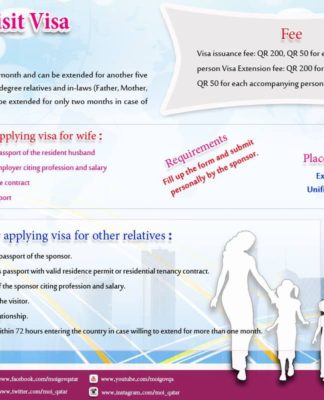Silicon Valley Bank and FedNow Highlight Need for Reliable Payments Infrastructure
BY PYMNTS | APRIL 28, 2023
|
Banks and FinTechs are re-examining what needs to change after the Silicon Valley Bank collapse.
As Form3 CEO Michael Mueller told PYMNTS’ Karen Webster, “nothing ever moves very quickly in payments.”
But the last 12 months, said Mueller, show us that some long-term trends are accelerating — particularly the need for reliable payments infrastructure in financial services.
What We Learned From SVB
Mueller noted to Webster that the SVB experience showed that there’s some resilience already baked into the payment technologies that banks are using. These financial institutions have the flexibility to respond to market events and the higher volumes that suddenly flow through digital channels.
But at the same time, he said, the situation has provided an opportunity for fraudsters to take advantage.
During those dark days in mid-March, as SVB fell, the pressing concerns facing enterprises — and by extension, banks and FinTechs — were whether deposits could be accessed and whether they would be able to meet payroll and pay suppliers. For the companies that had capital tied up with SVB as their sole provider of banking services, the ripple effect might have been a crippling pause in operations or even bankruptcy. Simply put, being able to make payments makes or breaks a business.
Fortunately, the fallout has been relatively contained. We’re nowhere near the systemic risks seen more than a decade ago during the financial crisis that saw marquee banking names face an existential threat amid their own bank runs.
But as to the lessons learned since March, generally speaking, in the post-SVB world, companies should have a set of “backup” operational banking relationships in place with several different providers, Mueller said.
For the banks themselves, the key questions revolve around whether they have the systems in place to manage payments situations on an ad hoc basis, with the ability to re-route payments to alternative providers on the clearing and settlement side.
What Matters Now
Speed and security are top of mind, he said, and now the impetus is on providers to determine how they need to get ready for real-time payments, set to receive a push in the U.S. by the launch of FedNow as soon as July.
There’s good reason for the measured approach in moving toward new technologies and ways of transacting, especially with the rise of instant payments. The payments landscape is woven across an intricate web of providers, geographies, regulatory regimes and settlement processes.
Now, he said, “there’s a recognition in the industry that payments are moving towards real time — and this is a trend that is unstoppable.”
Indeed, the phenomenon is global, as evidenced by real-time payments adoption in the United Kingdom and Brazil, to name but two examples. When FedNow joins in July, he said, FinTechs (Form3 among them, with its platform-based, cloud-native technology) will have the opportunity to reimagine financial infrastructure provided to enterprise clients to enable a host of new payments use cases.
He said real-time payments would prove to be especially useful during times of crisis because retail transactions will move at the same speed as they do for institutional clients. Any move toward real-time payments requires a regulatory push to change the payments infrastructure in a given country — then banks will realize there’s an opportunity to improve the payments experience.
And then, he said, requests to pay and other offerings wind up being layered on top of the real-time payments infrastructure. Low-hanging fruit includes just-in-time payroll, gig economy payouts on demand and connected economy payments as drivers pay at the pump from behind the dashboard.
“But all of this requires a different level of technology on the banking side of the equation — and this is technology that is always ‘on’ is fast and allows banks to be agile in ways that allow them to manage events like the SVB situation,” Mueller said.
For smaller banks to become that agile, he said, they’ll need to take a closer look at the technology setups. All too often, FIs have cobbled together a slew of solutions and providers that may have worked in the past but will not be able to handle the growing demands of real-time payments.
“I’ve been in the industry for years, and there are different approaches to technology migration,” he said. “There are no magic wands in terms of moving to a different type of infrastructure — and you have to do this step by step and in a responsible way.”
Partnering with providers is critical, he said, as banks find value in FinTech relationships that can help them transition to more modern infrastructure, with know your customer (KYC) and anti-money laundering (AML) processes automated and streamlined in the background.
Although the move to real-time payments can benefit everyone, he said, faster payments must be safer too, which in turn means that there may need to be additional security/fraud checks along the way. For example, in the U.K., there are confirmations needed that recipients’ names and account numbers all match up — and Form3 assigns risk scores to help embed real-time fraud detection into real-time payments.
As FedNow becomes a real-time reality, he said, there may be some cues from abroad. In the U.K., it’s taken a decade for faster payments to scale where there are more real-time than non-real-time payments. The United States is a larger market, but consumer expectations in America have changed.
“There are enough use cases to drive the adoption” of real-time payments, he told Webster, adding that “payments will slowly disappear in the consciousness of the consumer by making them seamless and settling them in real time.”
RECOMMENDED
Silicon Valley Bank Employees to Get Back Some Money
Bank of America CEO Says Deposit Insurance ‘Worked Pretty Well’
Bank Financial Advice Could Win Gen Z, Millennial Loyalty
Bank of America’s Erica Use More Than Triples Since 2020
SEE MORE IN: BANKING, BANKS, FASTER PAYMENTS, FEATURED NEWS, FEDNOW, FINTECH, FORM3, INSTANT PAYMENTS, MICHAEL MUELLER, NEWS, PYMNTS TV, REAL TIME PAYMENTS, VIDEO
Fighting Faster-Payments Fraud Comes Down to Technology and Education
BY PYMNTS | APRIL 28, 2023
|
Download the PYMNTS and The Clearing House April/May 2023
Download the PYMNTS and The Clearing House April/May 2023 “Real-Time Payments Tracker: Fighting Fraud in Real-Time Payments”
Fraud is top-of-mind for payment providers and the businesses and consumers they serve — for the simple reason that the cost of ignoring it is too much to bear. A recent report from the Federal Trade Commission (FTC) pegged fraud loss in 2022 at $8.8 billion, an increase of more than 30% from the previous year. Not all types of fraud are created equal, however, and one of the most important differentiators is the type of payments they target.2.4M: Number of consumers who submitted fraud reports to the FTC in 2022
Credit push payments are inherently safer than debit pull payments. The core difference between the two methods is that credit push payments involve payers instructing their banks to send money from their accounts to recipients’ accounts. In contrast, debit pull transactions have recipients’ banks extract money from payers’ accounts. Both payment types are vulnerable to different kinds of fraud and are vital to secure against bad actors.
The “Real-Time Payments Tracker®” examines the technology and regulatory solutions that can keep peer-to-peer (P2P) payment fraud at bay.
Around the Real-Time Payments Space
A recent report found that attempted fraud transactions skyrocketed by 92% between 2021 and 2022, with attempted fraud dollar amounts spiking by a massive 142%. This fraud was not limited to a single channel, instead affecting a variety of different payment methods. Some of the most pressing threats were account takeover fraud, attempted authorized payment fraud and new account fraud.
44%: Portion of consumers who use P2P services at least once per weekA recent survey of bank executives pinpointed P2P and other digital fraud as the top threat. The four biggest U.S. banks have recently reported more than 190,000 scams in which bad actors tricked victims via Zelle. The second-most widely feared threat was data breaches, which affected more than 9 million consumers last year. Other top threats included ransomware and third-party vendor breaches.
For more on these and other stories, visit the Tracker’s News and Trends section.
An Insider Details the Best Protections Against Push Payment Fraud
Push payments are typically considered much more secure than their pull payment counterparts, but they are far from invincible. Banks and payment providers looking to combat push payment scams must deploy data-driven solutions to prevent their customers from being victimized.
To get the Insider POV, we spoke with Lee Kyriacou, vice president of real-time payments at The Clearing House, to learn more about push payment fraud prevention.
How Fraud Damages P2P Payment Organizations
$8.8B: Consumer losses to fraud in 2022Fraud is a constant worry for companies of all types, driven by the sheer variety of fraud methods that bad actors deploy. Man-in-the-middle attacks, social engineering, account takeovers and botnets are just some of the thousands of different types of fraud that keep CEOs up at night — and the bad actors’ techniques are only growing more sophisticated by the day. The damage fraud can cause is not limited to companies’ finances and data: It can also impact their reputations.
This month, PYMNTS examines the economic and reputational harms fraud can wreak on P2P applications and how technological solutions can keep fraud to a minimum.
About the Tracker
The “Real-Time Payments Tracker®,” a collaboration with The Clearing House, examines the technology and regulatory solutions that can keep P2P payment fraud at bay.






























